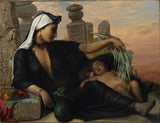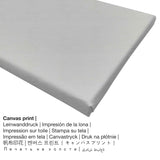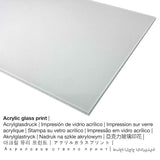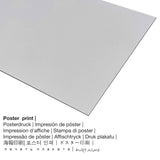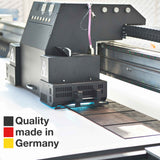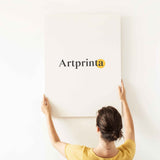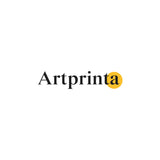Elisabeth Jerikou-Baumann, 1872 - Nwanyị nwanyị Fellah Ijipt ya na nwa ya - ọmarịcha nka.
Ụtụ gụnyere. Mbupu gbakọrọ na ndenye ọpụpụ.
Ozi ndabere ngwaahịa
N'elu 140 ihe osise dị afọ bụ ndị kere onye n’ezie master Elisabeth Jerichau-Baumann. This artwork belongs to the art collection of Statens Museum maka Kunst (National Gallery nke Denmark), which is the largest museum of fine arts in Denmark and is attached to the Danish Ministry of Culture.. The modern art public domain artpiece is being provided with courtesy of National Gallery of Denmark.The creditline of the artwork is: . What is more, the alignment of the digital reproduction is landscape and has an aspect ratio of 4: 3, nke pụtara na ogologo bụ 33% ogologo karịa obosara. The painter Elisabeth Jerichau-Baumann was a European artist from Denmark, whose style can mainly be classified as Realism. The Realist artist lived for 62 afọ, born in the year 1819 in Warsaw and died in 1881 in Copenhagen.
Họrọ nhọrọ ihe ebipụta nka mara mma
Maka akwụkwọ nka ọ bụla dị mma anyị na-enye ihe dị iche iche na nha. Ka ị kwekọọ n'ihe ị chọrọ nke ọma, ị nwere ike họrọ n'ime nhọrọ nhazi ngwaahịa ndị a:
- Kwaaji: The printed canvas, which shall not be mistaken with an artwork painted on a canvas, is a digital copy printed from a UV direct printing machine. The great advantage of canvas prints is that they are relatively low in weight, meaning that it is easy to hang up the Canvas print without additional wall-mounts. That is why, a canvas print is suited for any kind of wall in your house.
- Mbipụta iko acrylic (nke nwere ezigbo mkpuchi iko): A glossy acrylic glass print, often denoted as a UV print on plexiglass, changes your favorite artwork into wonderful décor and forms a good alternative option to dibond and canvas fine art replicas. The major advantage of an acrylic glass art print is that sharp contrasts as well as granular color details will be identifiable due to the fine tonal gradation.
- Mbipụta nke aluminom: Aluminium Dibond prints are metal prints with a true depth effect - for a modern look and a non-reflective surface structure. For our Print On Aluminum Dibond, we print the artwork on the surface of the white-primed aluminum material. The bright & white components of the work of art shine with a silky gloss but without the glare. The colors are bright and luminous in the highest definition, the fine details of the print appear clear and crisp.
- Akwụkwọ mmado na ihe kwaaji: The poster is a printed sheet of canvas paper with a slightly rough structure on the surface. Please keep in mind, that depending on the size of the poster print we add a white margin of something between 2-6cm round about the artwork, which facilitates the framing with your custom frame.
Important information: We try what we can in order to describe the products as precisely as possible and to exhibit them visually in our shop. However, the pigments of the print products and the print result can differ to a certain extent from the representation on the device's screen. Depending on your screen settings and the condition of the surface, color pigments may not be printed as realistically as the digital version. Considering that all art prints are processed and printed manually, there may also be slight discrepancies in the motif's exact position and the size.
Nkọwa ihe ahaziri ahazi
| Bipụta ụdị ngwaahịa: | mmepụta nka |
| Mmeputakwa: | dijitalụ mmeputakwa |
| Usoro mmepụta: | mbipụta dijitalụ |
| Mmalite ngwaahịa: | emere na Germany |
| Stockdị ngwaahịa: | mmepụta ihe na-achọ |
| Eji ngwaahịa a chọrọ: | ihe ndozi ụlọ, ihe ndozi mgbidi |
| Ntuziaka onyonyo: | nhazi odida obodo |
| Njikwa oyiyi: | ogologo ruo obosara 4: 3 |
| Nsonaazụ: | ogologo bụ 33% ogologo karịa obosara |
| Nhọrọ dị: | acrylic glass print (nwere ezigbo mkpuchi iko), mbipụta akwụkwọ mmado (akwụkwọ kwaaji), mbipụta ọla (aluminium dibond), mbipụta akwụkwọ. |
| Canvas dị n'elu ihe nrịbama (mbipụta kanvas) nha dị iche iche: | 40x30cm - 16x12", 80x60cm - 31x24", 120x90cm - 47x35", 160x120cm - 63x47" |
| Mbipụta iko acrylic (nke nwere ezigbo mkpuchi iko): | 40x30cm - 16x12", 80x60cm - 31x24", 120x90cm - 47x35", 160x120cm - 63x47" |
| Nhọrọ nha nke akwụkwọ mmado (akwụkwọ kwaaji): | 40x30cm - 16x12", 80x60cm - 31x24", 120x90cm - 47x35" |
| Mpempe aluminom (aluminium dibond ihe) nha: | 40x30cm - 16x12", 80x60cm - 31x24", 120x90cm - 47x35" |
| Igwe onyonyo: | adịghị |
Ozi ndabere nka
| Aha nka: | "An Egyptian Fellah Woman with her Baby" |
| Nhazi: | sere |
| Otu izugbe: | nkà nke oge a |
| Nhazi oge: | 19th narị afọ |
| Afọ nka: | 1872 |
| Ogologo afọ nka nka: | 140 afọ |
| Egosiputara na: | Statens Museum maka Kunst (National Gallery nke Denmark) |
| Ebe ebe ngosi nka: | Copenhagen, Denmark |
| E Nwere na: | Statens Museum maka Kunst (National Gallery nke Denmark) |
| Ụdị nka nka: | ngalaba ọha |
| Site n'aka: | National Gallery nke Denmark |
Tebụl nchịkọta ihe nkiri
| Aha onye nka: | Elisabeth Jeriko-Baumann |
| okike nke onye nka: | nwoke |
| Obodo onye nka: | Danish |
| Ọrụ: | onye na-ese ihe |
| Obodo onye nka: | Denmark |
| Otu nka: | omenkà nke oge a |
| Ụdị nka: | Ihe ngosi |
| Nwụrụ anwụ: | 62 afọ |
| Afọ amụrụ: | 1819 |
| Ebe omuma: | Warsaw |
| Afọ ọnwụ: | 1881 |
| Nwuru na (ebe): | Copenhagen |
© Nwebiisinka nke, Artprinta.com (Artprinta)
General information from Statens Museum for Kunst (National Gallery of Denmark) (© Copyright - by Statens Museum for Kunst (National Gallery of Denmark) - Statens Museum maka Kunst (National Gallery nke Denmark))
Baumann was a rare artist in her own day. Partly because she was a woman, but also because of her unusual openness towards the exotic and the unknown. This painting is an excellent example of Baumann’s keen sense for the erotic and the sensuous.
This painting of an Egyptian farm worker is among the most striking of Jerichau Baumann’s oriental scenes. The nudity beneath the sheer silk fabric, the exotic jewellery, the reddening evening sky, and the dark colours all infuse it with a sensuous quality that must have had a strong impact in the 1870s, a time when the body was still viewed with suspicion.
Indeed, Elisabeth Jerichau Baumann occupies a unique position within Danish post-1850 art in more ways than one. Hailing from a Polish-German background, she had a wider horizon than most Danish artists, who would primarily strive to identify and cultivate the uniquely Danish. She had an openness to all things foreign and exotic that was rarely seen in Denmark at the time; her only real match in that regard would be Hans Christian Andersen. The wanderlust of an artist took her to Turkey, Greece, and Egypt (1869-70 and 1874-75), furnishing her with a rich fount of oriental motifs.
The museum also provides interactive and video material for this artwork.

